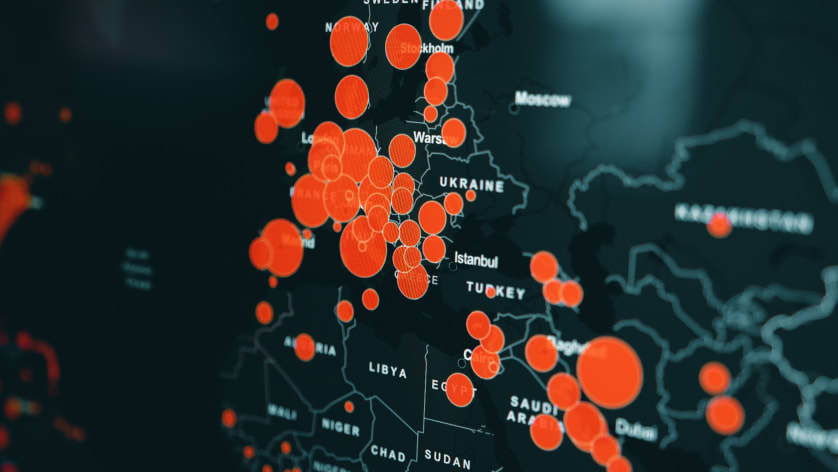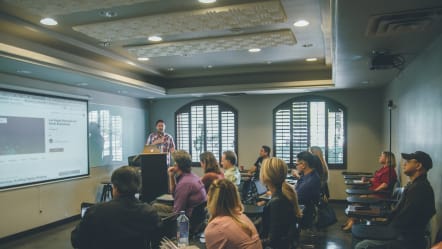Make Company Leadership Stop Ignoring Your Analytics

All the data-driven analysis in the world is useless if no one in a position of power pays attention to it. Make sure to include the key ingredient to pique interest: context.
There were many times when corporate decision-makers would forego data analysis in favor of following their instincts. This type of decision-making process is based on actual knowledge that has been gained from working in various jobs, companies and industries.
It is understandable that basing decisions on abstract concepts like numbers and statistics appears to be risky, especially given how quickly data-gathering and -sharing technologies have grown in the last 20 years. Data-based inference has been used for centuries, but only in the last few years has it become widespread. By conveying the value of data-informed decision making, analysts can encourage decision-makers to embrace data-driven insights.
How to use your data
In order to take full advantage of data-based inference, practitioners must present statistical insights in language that is relevant and understandable to their target audience, while also being contextualized. The goal is to use statistical findings to pique curiosity among decision-makers.
Making Insights Clear
Data-based inference can be fully utilized by practitioners if they couch statistical insights in language that is relevant, understandable, and contextualized for the target audience, so as to pique decision-makers’ curiosity.
If a part of the analysis is too complex to explain in the context of the problem, then it belongs in the appendix. It is important for researchers to keep the question's context in mind when communicating their findings.
Imagine, for instance, that voluntary terminations have recently gone up at a major bank. Given that management suspects these resignations could be due to fraudulent sales practices, they want to investigate the extent of such misconduct, if any exists.
To collect information, management could go out to individual members or survey a sample of leaders from other industries about what they are observing in terms of turnover within their sector. To get an accurate picture of turnover using a wider lens, it would be best to use human-resources data and statistical inference to piece together a narrative of what might be occurring.
By viewing their work as constructing a statistical case instead of looking for some root cause, researchers can build a more coherent narrative when explaining statistical results. It is more effective to present findings in a way that builds evidence for or against a conclusion, rather than isolating them into separate sections (e.g. "Findings," "Methods," "Data Sources," etc.). By working to build a statistical case, researchers are able to frame data outcomes in terms of how and why they address the central question of interest to decision-makers.
Examining data and statistical estimates as pieces of evidence either for or against some proposed outcome helps to focus attention on the question that underlies their use. The "academic paper as presentation" style, which presents analytical results against the questions researchers are using them to address, is challenged by this.
If researchers did turn up statistical evidence of fraud, they would then present their findings as case exhibits with data, methods and visuals used to support each evidentiary plank in the overall conclusion that fraudulent activity is the likely culprit for elevated quit rates.
For instance, if we were to present how quit rates this year were substantially elevated above their historical average, this would be a good first plank. From here, researchers could further highlight which lines of business were responsible for most of the increase and point toward potential incentives for unsavory business practices. If, for example, the increase in personal accounts or retail banking roles drives the overall trend relative to other lines of business, researchers might point to how new account generation, being tied to bonuses or promotions, creates an incentive for fraudulent activity. By presenting potential causes as they come up alongside statistical results, the usefulness of each piece of statistical evidence is given more credence.
What Else Could it Be?
Thinking about relevant counterfactuals is a useful method for contextualizing findings, as it engenders critical assessment of potential solutions and gets decision-makers thinking in terms of trade-offs. Contextualize the full scope of the problem and determine what occurred this time and what is likely to occur in future.
Empirical evidence that shifts the focus away from potential explanations of what has occurred and toward others serves to countenance their usefulness to decision-makers in parsing competing narratives. By providing insights into potential scenarios that may have otherwise gone unnoticed, statistics play an important role in decision-making processes by helping to rule out other possible explanations for the question at hand.
In our hypothetical example, then, alternative factors that might drive workers to terminate employment would be good counterfactuals to examine. One potential reason for the elevated quit rates could be that the workforce is aging or that young or short-tenured workers are more likely to quit sales roles. To explore this, analysts should look into average ages and tenures of quitting employees.
It would also be useful to compare the current quit rates in different lines of business with historical trends to see if the current quit rates are anomalous. In this case, that shift was to fraudulent account activity and away from the competing alternative of terminations due to expected demographic patterns like retirements and typically high termination among new salespeople.
Beyond Visualization
You need to use graphics and figures whenever possible to present your findings in an enticing manner. The prominence of numerical visualization has grown significantly in the past five years, due in part to new technologies that make visualizations more accessible. Tableau, Shiny, and Power BI are a few examples of these technologies.
While visualizations can be helpful for understanding and counterfactual thinking, they are not a cure-all for making statistical results relatable to those who have to make decisions based on them. This can also be expressed by saying that captivating visuals are sometimes necessary to ensure business leaders use statistical findings to inform their decisions. The conclusions that visual evidence points towards, however, are more important. Appealing graphics and figures can be powerful means of communicating analytical findings, but they alone will not make researchers’ arguments for them.
Simply presenting visuals of time-series trends in inter-sector quit-rates will not be enough to convince the bank's brass that fraudulent account activity has occurred. It is not enough to merely set up exhibits in court and hope that the judge and jury will be impressed enough to render a verdict in your favor; you must make a case for your exhibits.
Leading With Data
The environment in which a problem occurs must also be the environment in which the problem is solved if the likely culprit is perverse incentives, as in the example above. Firing and replacing fraudulent actors or shuttering specific locations where fraud has occurred are enticing solutions; however, they will not solve the fundamental problem. It is crucial that researchers continue to emphasize that statistical findings are the result of some process or processes generating them.
A coherent narrative supported by statistical evidence is necessary to engage and inform business stakeholders. By eliciting curiosity and providing context for statistical findings, we give decision-makers the relevance they need to make informed decisions.














